Green Roofs
What is a green roof?
A green roof system is an extension of the existing roof which involves a high quality waterproofing and root repellent system, a drainage system, filter cloth, a lightweight growing medium and plants.
A green roof is a roof with some type of vegetation like herbs, spices, succulents or other greenery. For example, a roof can also be planted with heather or dune plants. In addition, vegetation can be combined with solar panels or wind turbines and in this case, it is called an energy roof.
Green buildings and green roofs have become new weapons in the fight against climate change, with hundreds of cities around the world promoting environmentally friendly building techniques to reduce pollution from buildings, structures that are considered the most polluting in metropolitan areas.
Different Types of Green Roof Systems
There are three basic types of green roof: intensive (thick), extensive (thin) and semi-extensive (somewhere in between).
1. Intensive green roofs - Roof gardens
These are roofs with a garden as normally found at ground level. It can be planted with shrubs, spices, herbs and even some types of trees!
With this type of roof garden, it goes without saying that the roof construction must be strong enough because such a garden has a considerable weight (more than 200 kilos per square metre!). An intensive green roof can be used like a normal garden and requires a lot of maintenance.
Characteristics of an intensive green roof:
Possible on roofs with a slope of 1-4 degrees.
Layer thickness: more than 20 cm.
Roof load: 200 kg/m² - a modified roof construction is required.
Permit and capacity check by an engineer are required.
High maintenance (like a garden).
2. Extensive green roofs - Sedum Roof
A sedum roof is planted with mosses, succulents and spices that do not require much maintenance. This type of roof has a much lighter weight than an intensive green roof. The advantage of this system is that it is cheaper, lighter and easier to build than an intensive green roof.
Sedum is a type of succulent plant that can absorb a lot of moisture in its leaves. They resist well to a prolonged dry period and they support the heat well. Sedum can grow on a special substrate or on the ground.
In a sedum roof, it is important to pay attention to the drainage (mats) because the water must be able to drain away sufficiently in case of prolonged rain. The sedum protects the roof against harmful weather conditions such as UV light, humidity and temperature fluctuations. In addition, sedum also has an insulating function. Roofs covered with sedum have a lifespan two to three times longer than a standard roof covering.
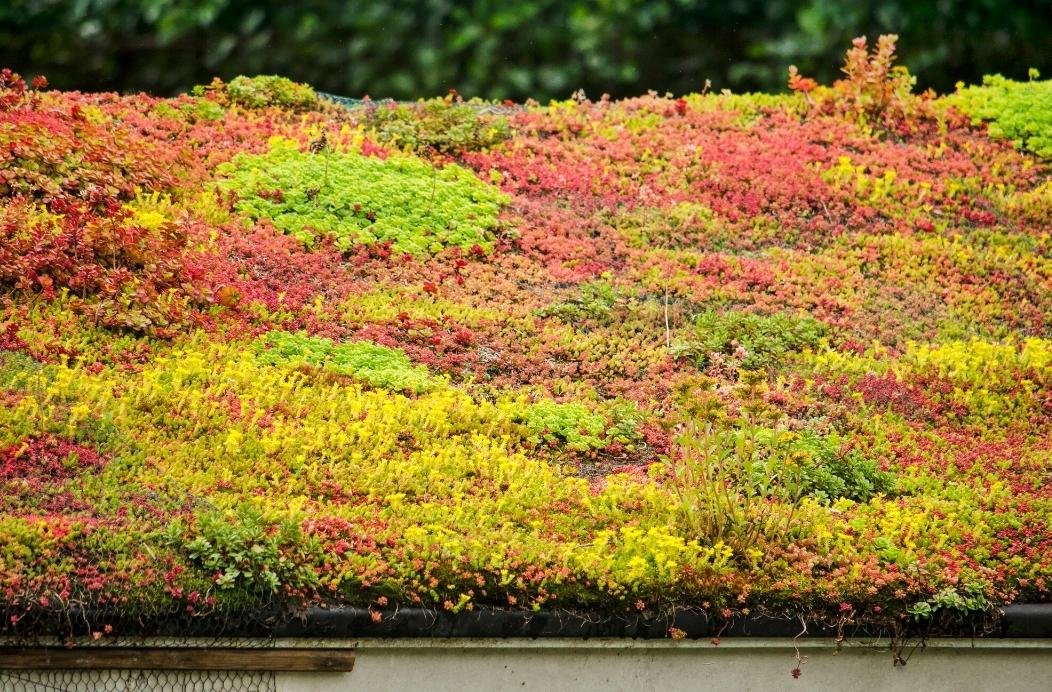
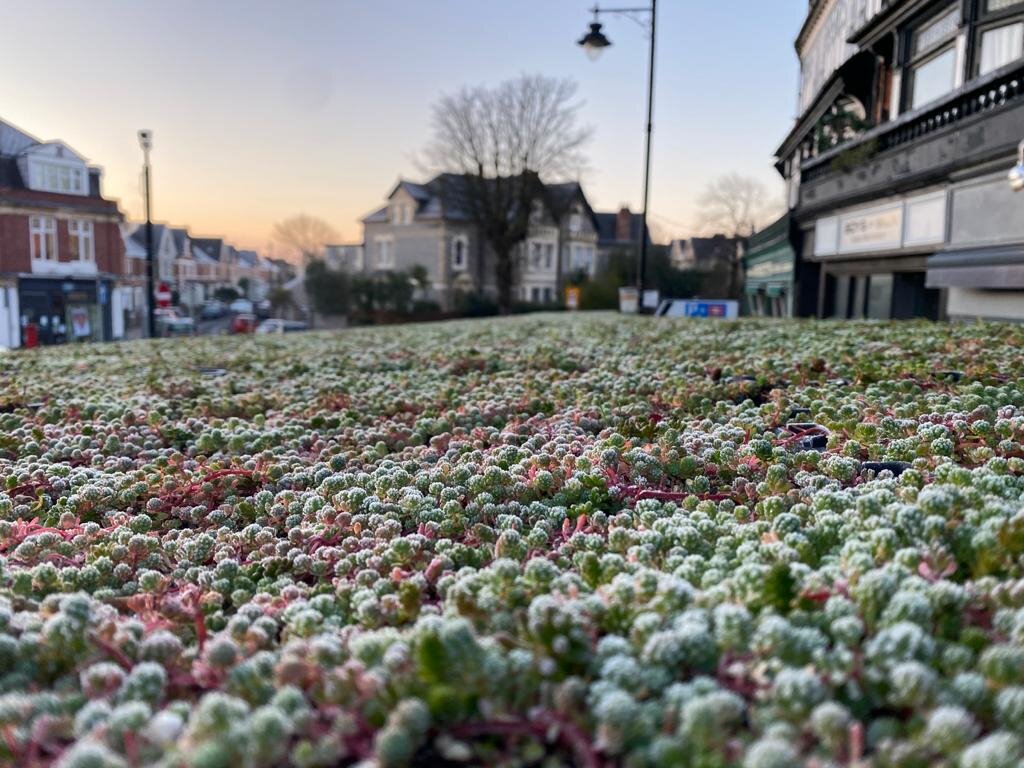
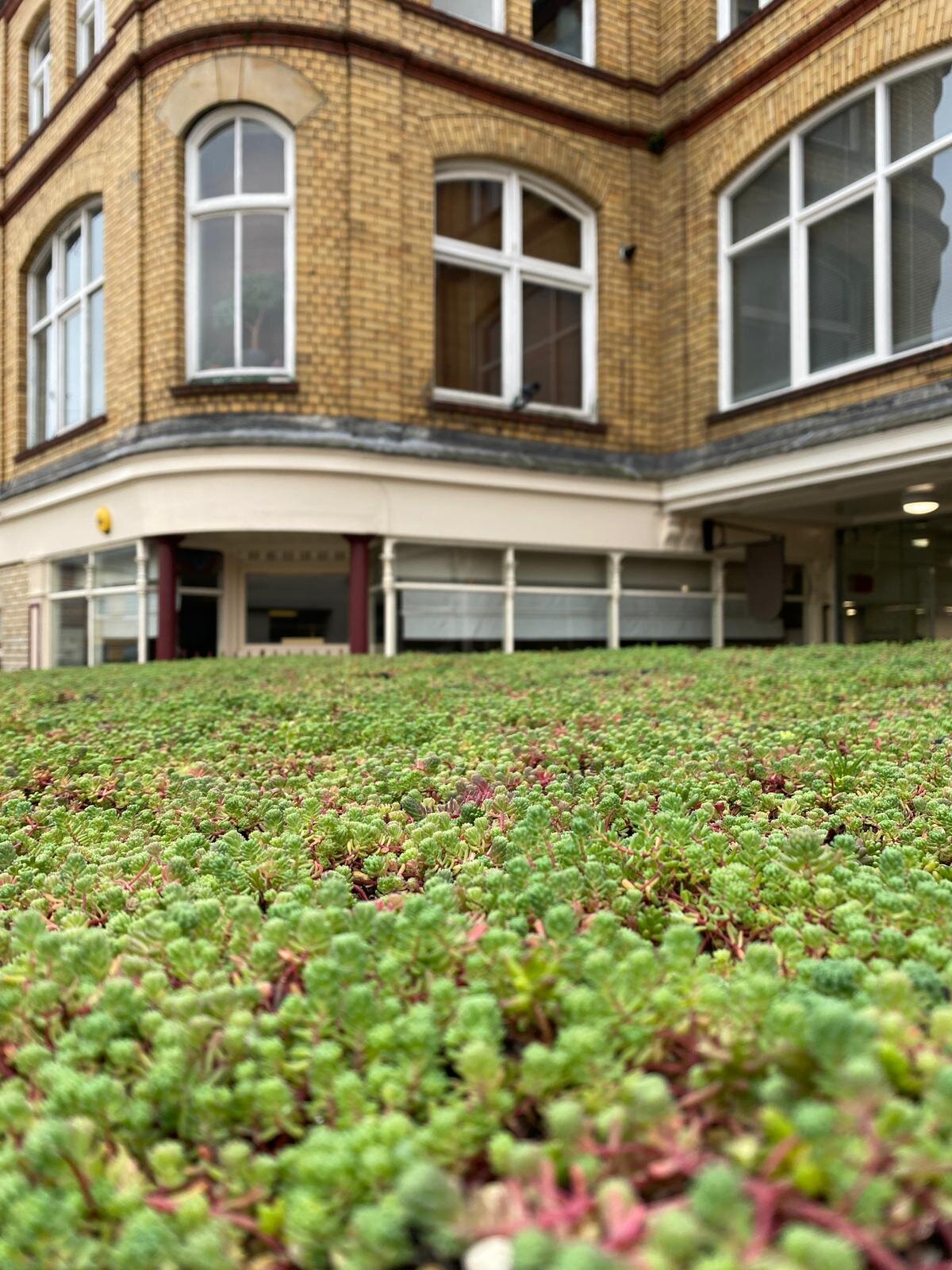
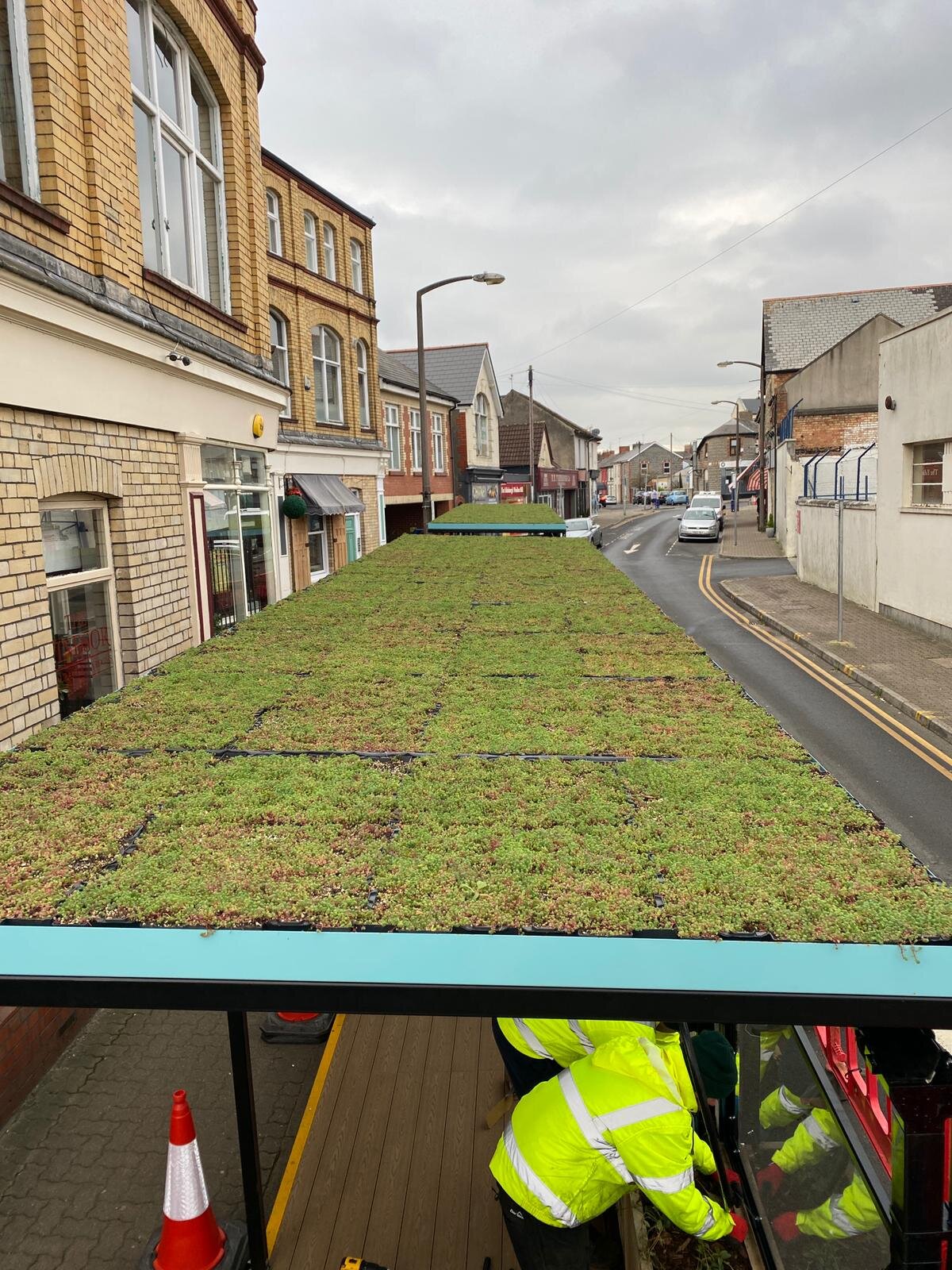
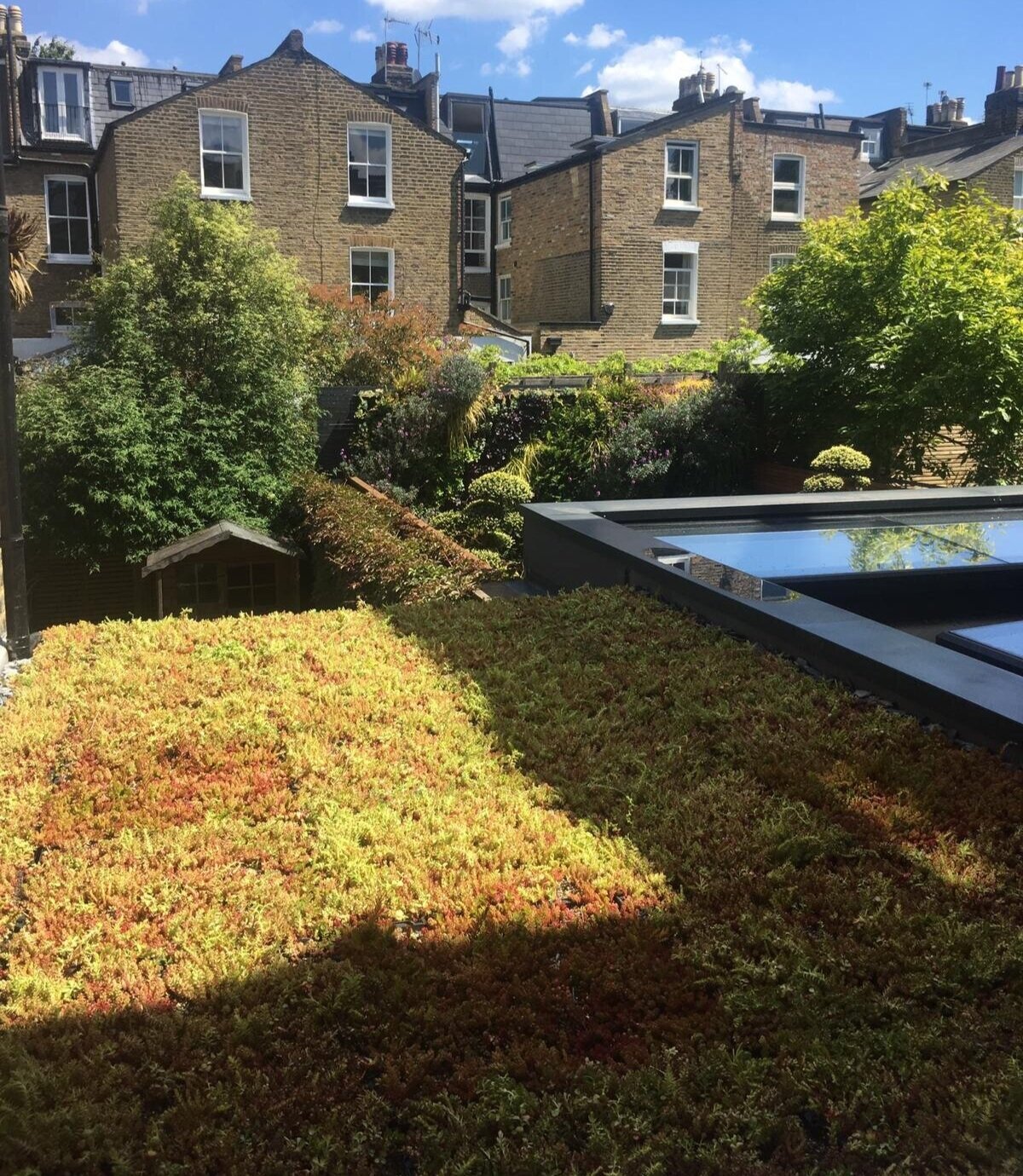

Characteristics of an extensive green roof:
Possible on roofs with a slope of 1 to 45 degrees.
Layer thickness: less than 20 cm.
Roof load: 40 to 110 kg/m².
No permit required but - capacity control by an engineer is required.
Low maintenance.
3.semi-extensive Green Roofs
Semi-intensive green roofs need a deeper soil layer. In addition to the mosses, grasses and sedum of extensive roofs, semi-intensive plantings include grasses, flowering plants, taller grasses and small shrubs. Semi-intensive green roofs require a little more maintenance as the plants tend to need pruning, irrigation and fertilisation.
Green Roof Benefits
In an urban environment, vegetation has many advantages. In addition to the undeniable aesthetic and functional aspects, it improves air quality by producing oxygen and capturing more CO2, better controls erosion and has beneficial effects on the health of the population (protection against UV rays, stress reduction, etc.).
What are the advantages of a green roof?
ENVIRONMENTAL BENEFITS
Filtration of volatile particles from the air: a 1000 sq. ft. (93 m2) roof can remove more than 40 lbs. of pollutants from the air per year, equivalent to the emissions of 15 cars for one year, in addition to producing oxygen.
Oxygen production and regulation of thermal air movement through the plants ability to absorb carbon dioxide.
Reduction of greenhouse gas emissions.
Reduction of the heat island phenomenon: decrease of air temperature near the surface, up to 16.4 degrees on average.
Reduces ground runoff, sewer back-up, flooding, erosion and drinking water contamination. Green roofs capture and retain between 50 and 100% of rainwater.
Possibility to recycle wastewater from a building by routing it to the roof.
ECONOMIC BENEFITS
Added value for the building
Increased life span of the roof and the membrane, by blocking UV rays
Increased roof insulation (mitigating heat gain and loss) resulting in lower energy costs:
38% lower heating requirements than a conventional roof
Reduction of air conditioning needs between 90 and 100%.
Considering the life cycle of materials, green roofs are more expensive to install, but are more profitable in the long term.
SOCIOLOGICAL BENEFITS
Generation of a better quality of life: accessible and pleasant green spaces for the occupants, views of the city, etc.
Increased soundproofing: the substrate blocks low frequencies while the plants block high frequencies. For example, a 5-inch substrate can reduce noise by 40 dB.
OTHER BENEFITS
Fire: Vegetated roofs can delay the spread of a fire from the building to the roof and vice versa.
LEED - (Leadership in Energy and Environmental Design) is the most widely used green building rating system in the world - A green roof can earn points in different categories: roof water management, sustainability, heat islands…
Green buildings are designed to reduce the overall impact of the built environment on human health and the natural environment by using energy, water and other resources efficiently. These buildings are also expected to improve the productivity of the employees who work there and reduce waste and pollution.
What urban problems can green roofs solve?
There are several tangible benefits to the public when a city government implements policies that encourage the development and maintenance of green roofs. These include improved stormwater management, heat island reduction, improved air quality, energy savings, preservation of urban biodiversity, neighbourhood beautification, local employment development (green jobs), and more opportunities for active and passive green space development. With a modest investment, many cities are taking advantage of the under-utilised, overheated and ugly roofs of their buildings.
How are Green Roofs Installed?
Green roofs are possible on roofs with a pitch of 1 to 45 degrees - If the slope is higher than 35 degrees, special techniques must be applied to keep the various layers in place. A drainage layer is not always necessary on a sloping roof, because water can drain away naturally due to the slope of the roof.
Planting is just the tip of what's under the green roof, a moisture retention fleece keeps water in soil instead of letting it pool on the surface; an aqua drainage system takes away excess water. Good membranes are still needed to prevent leakage, while an air barrier prevents the passage of internal water vapour through the roof, keeping condensation within.
(The German FLL guidelines are used worldwide because Germany dominates the market. )
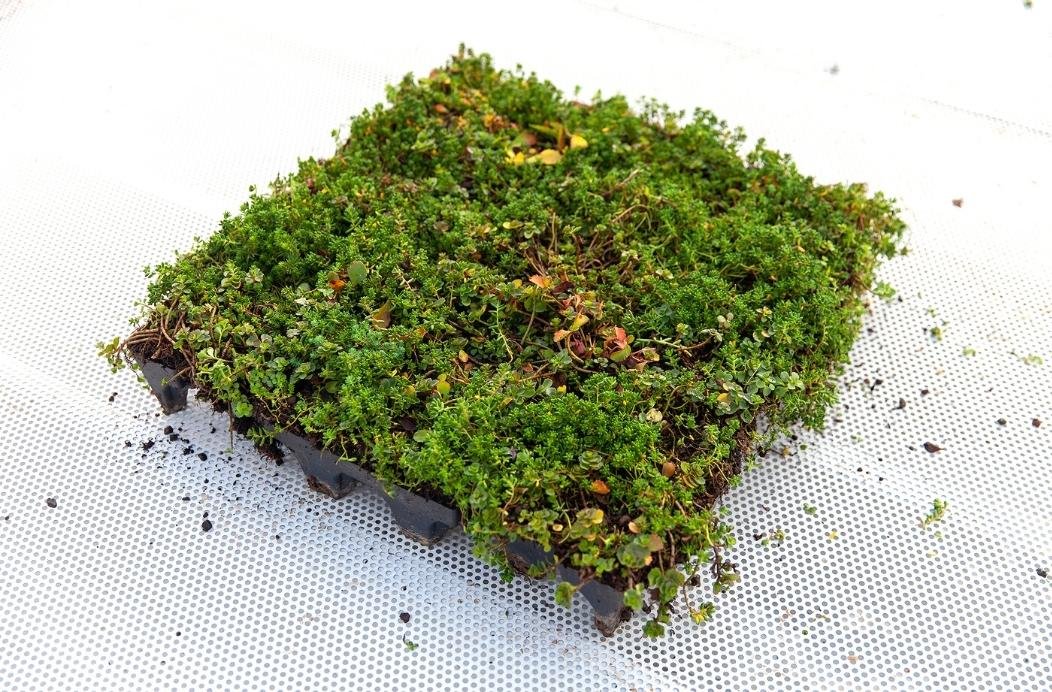
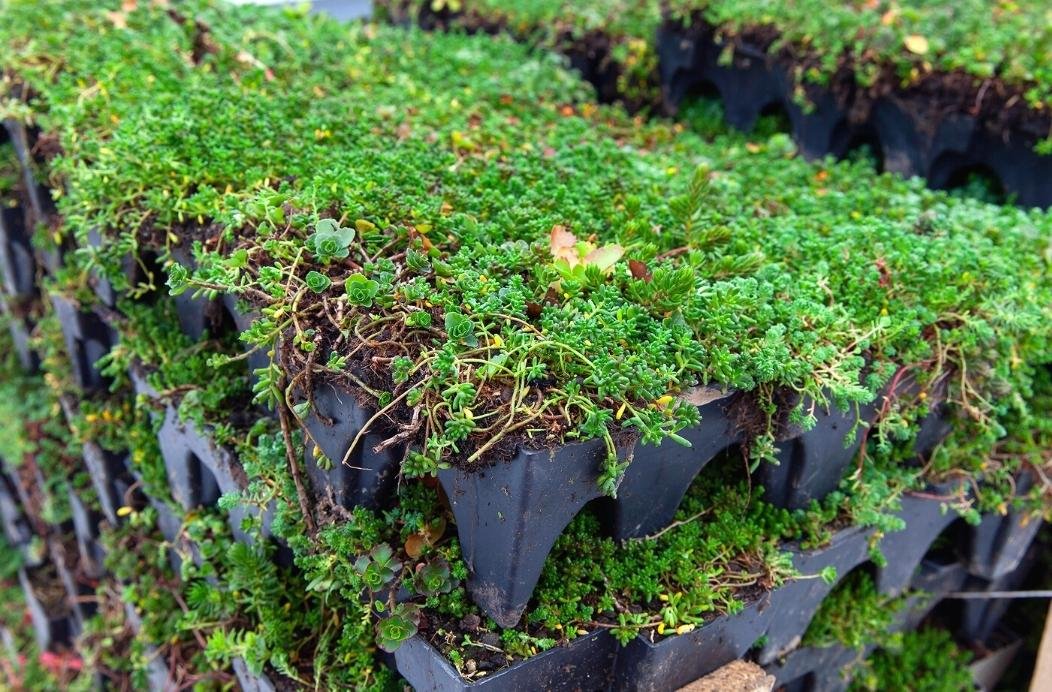
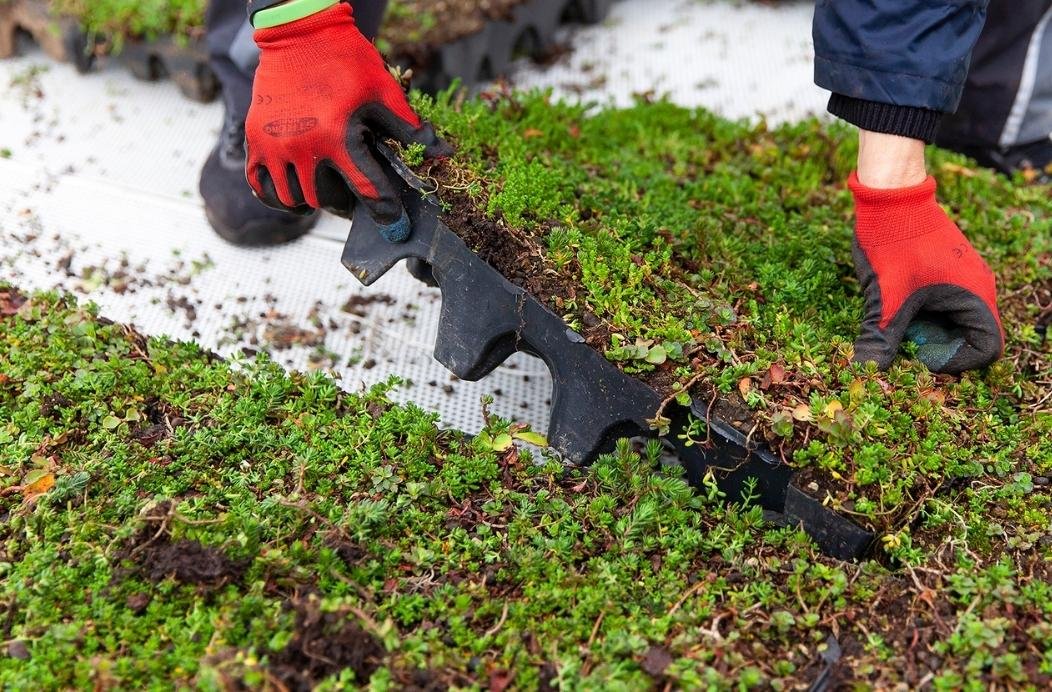
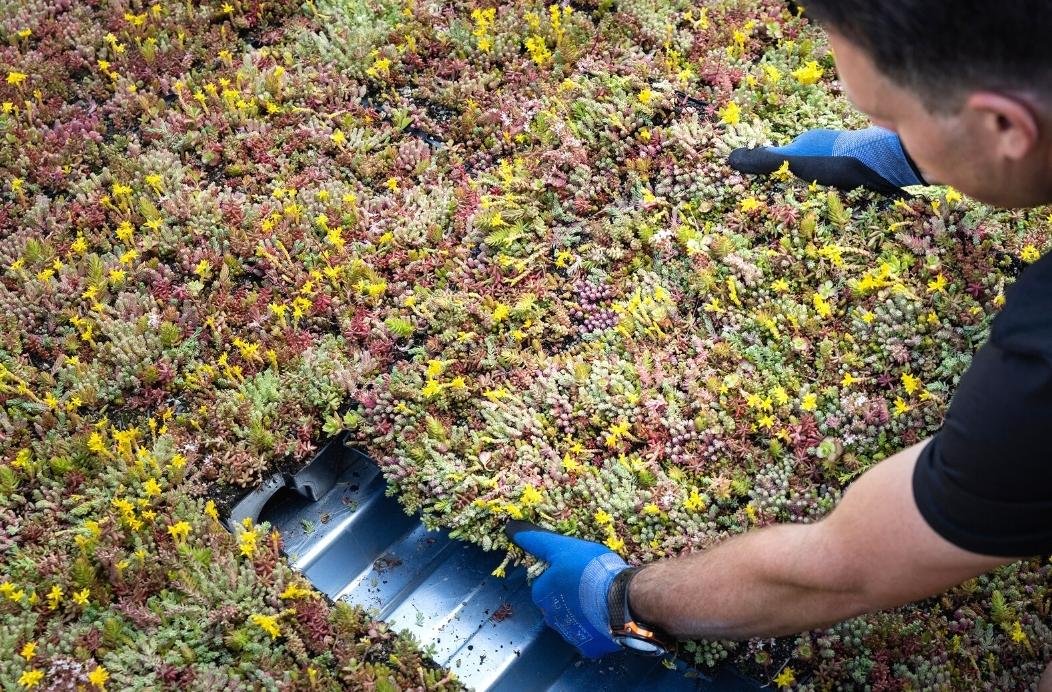
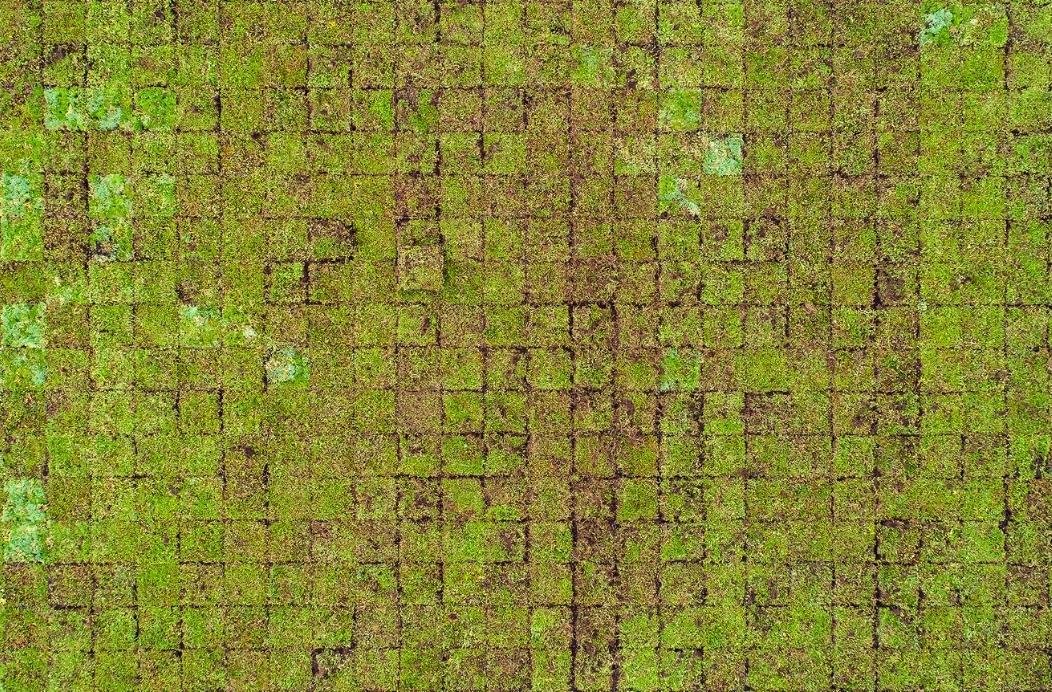
What Drainage Does a Green Roof Need?
Green roofs need to be protected by a waterproof membrane. A soil layer should be placed over the membrane before installing any other layers. Dry shingle rivers should be installed to drain water away from the roof. This method gives a nice pattern to the roof.
How much does a green roof cost?
That depends on the type of green roof and the type and nature of the building. There are simple, low-cost systems that are lightweight and low-maintenance, and there are more complex systems that structurally require significant load-bearing capacity and use a wide variety of plants.
INTERESTING FACTS
A report released in 2016 by the Intergovernmental Panel on Climate Change (IPCC), a U.N. agency, notes that environmentally friendly building techniques offer "potential energy savings of 50 to 90 percent in new and existing buildings. In addition, energy-efficient technologies offer the potential to reduce CO2 emissions by 20-45%, increase infrastructure efficiency by 30-70%, improve GHG emissions efficiency by 20-45% and reduce service demand by 20-40%.”
According to data from a Green Roofs for Healthy Cities conference, green roofs capture 70-90% of the precipitation that falls on them during the summer, cool the air temperature near the surface (up to 16.4°C on average), and reduce smog and the diffusion of dust and particulate matter in the city.
A cost-effective and efficient way to participate in the green building initiative is to build green roofs - that is, to cover roofs with vegetation so that they look beautiful and conserve energy optimally. Experts believe that a green roof offers several public benefits, including better stormwater management, heat island reduction, improved air quality, energy savings and preservation of urban biodiversity.
Key Benefits TAKEAWAY:
1.Reducing problems of water run-off and better storm water management
2. Building insulation
3. Aesthetic benefits
4. Providing habitats for birds and insects
5. Contributing to improvement of urban air quality
6. Cooling the urban environment
7. Contributing to reduced noise pollution
8. Reducing risk of fire spread between buildings




